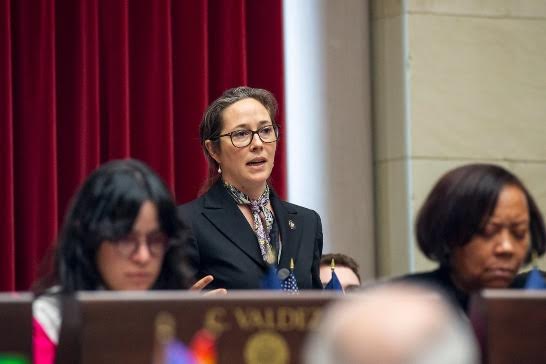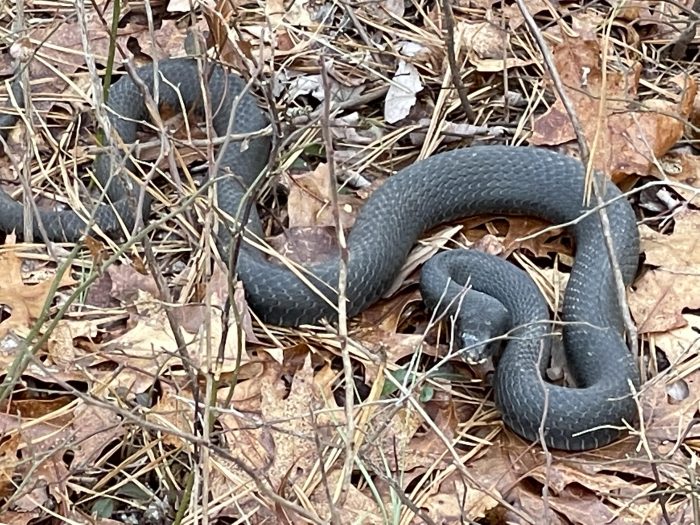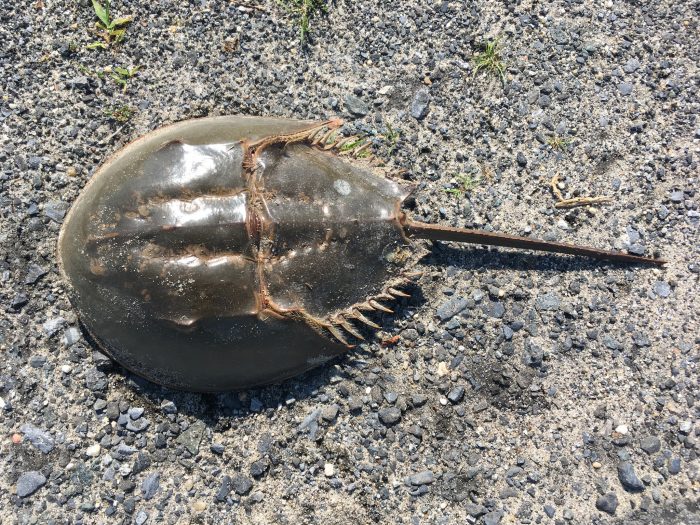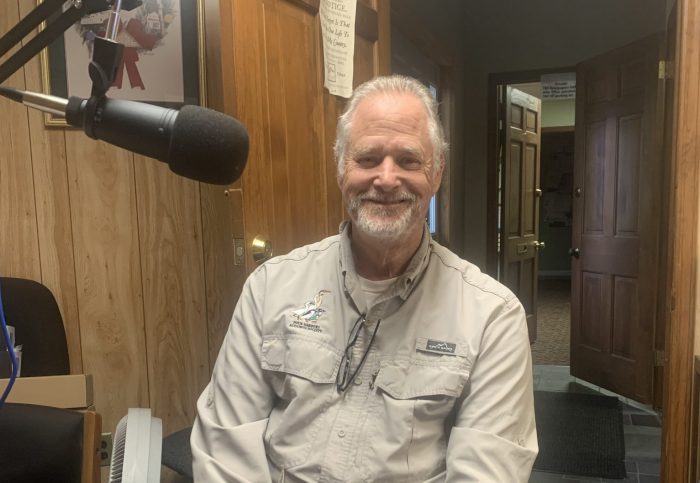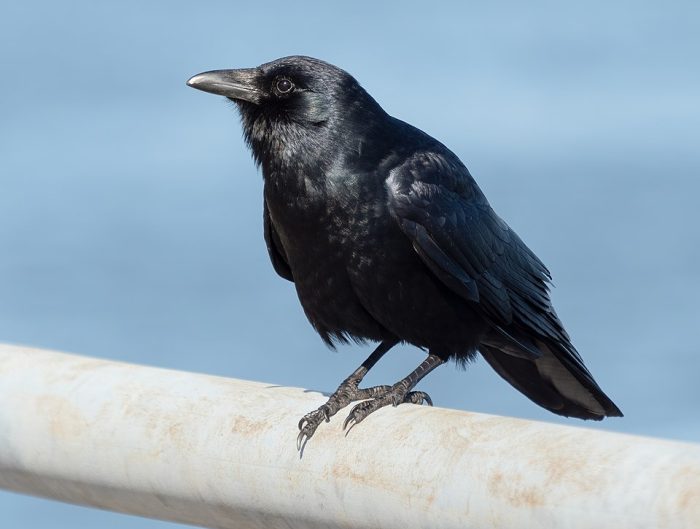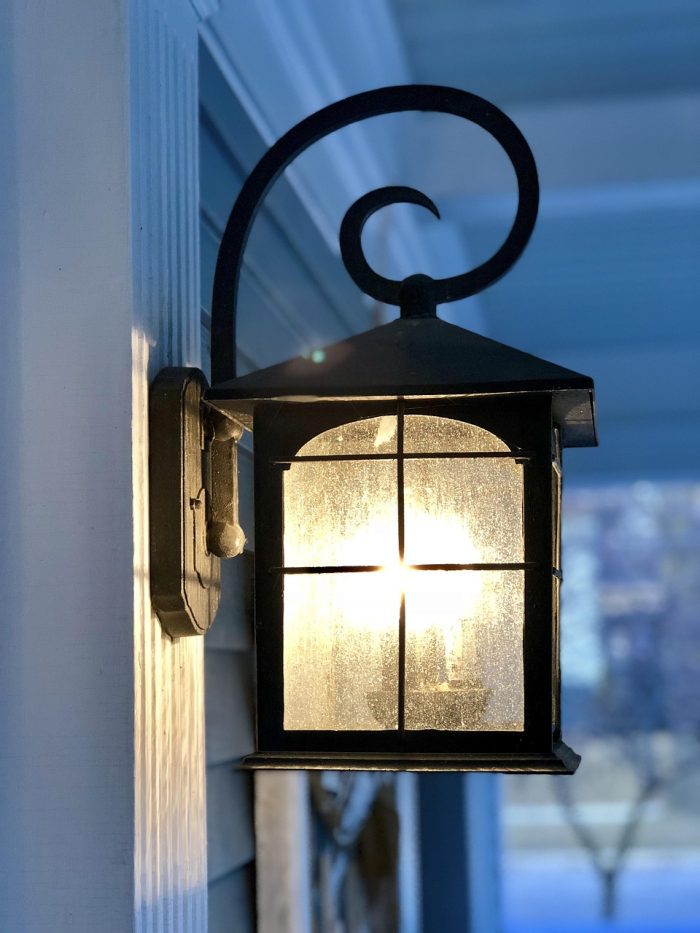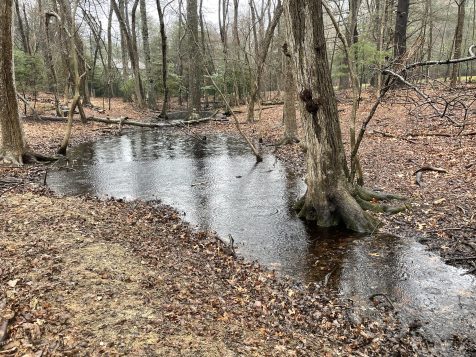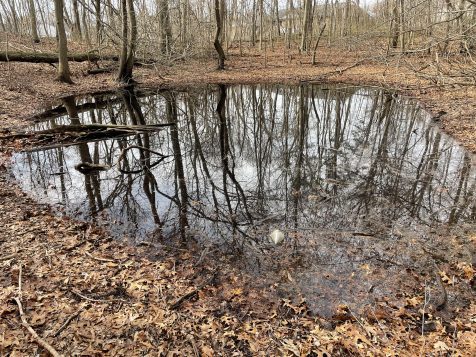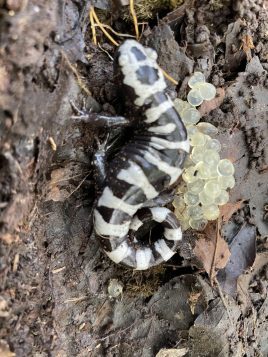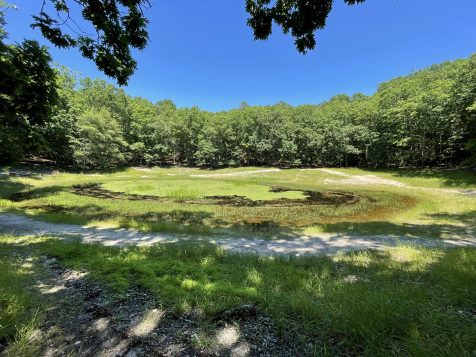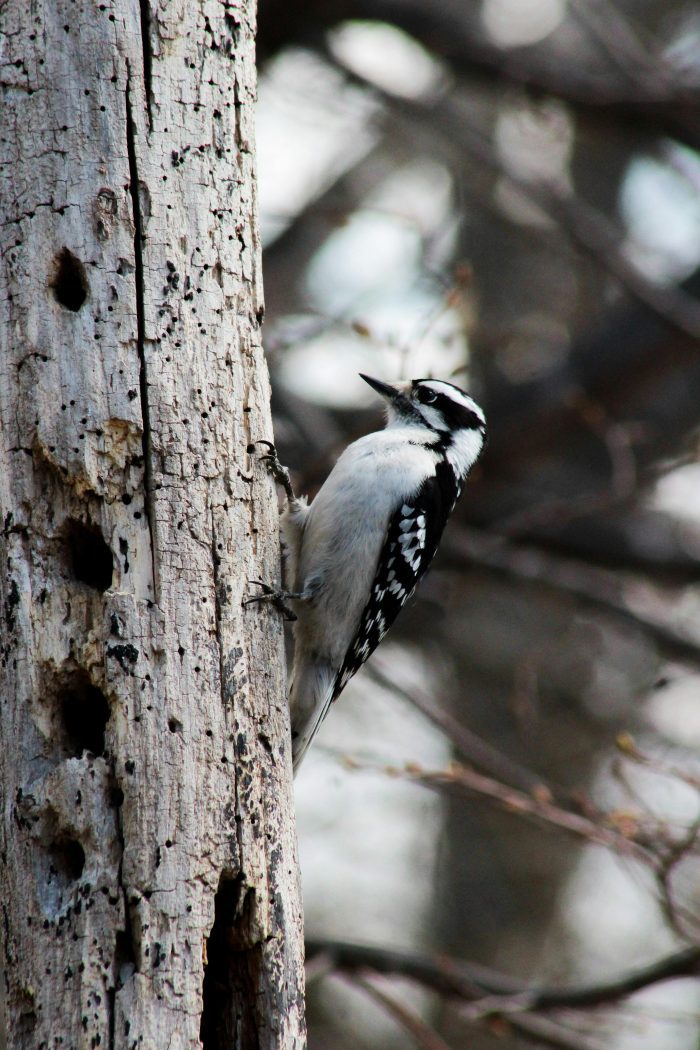John Turner
Nature Matters: Snake Stories
By John L. Turner

I became excited at discovering the four large plywood boards laying in the woods at the edge of a Town of Brookhaven preserve in Coram. While the dumping of the material was a thoughtless and selfish act by some careless individual, I knew the four boards laying haphazardly on top of each other nevertheless provided an opportunity to see what was living beneath, as boards like this create habitat that a number of different animals like to use. I was not to be disappointed.
Lifting up the top board until it was vertical along its long side, I peered down to see a curled up Ring-necked snake. A little more than a foot long and the thickness of your pinky, the ring-necked lives up to its name with a bright yellow ring around its neck matched by a pretty yellow belly. The top of the snake is grey (in other individuals I’ve seen the dorsal or top side is more like a muted mauve color) making for an attractive if diminutive serpent. The snake moved off the board giving me the opportunity to lift the next one — which revealed a few crickets but no snakes.
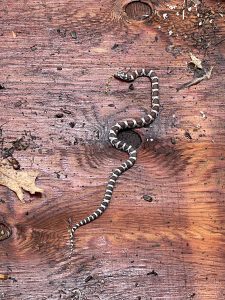
I leaned the second board up against the first and slowly turned over the third board — success! Laying there in the middle of the damp board was a slightly curled milk snake. The milk snake is highly attractive, possessing irregularly shaped burgundy colored splotches on its back and sides which are outlined in black on a base of white. The extent of the splotches makes the white in between look like rings or bands. Milk snakes get their name because they were once common around milking barns or cow sheds where they fed on the small mammals plentiful there.
Of the seventeen snake species found in New York State, eleven are native to Long Island — besides the two aforementioned species, others are the Northern water snake, smooth green snake, Eastern hognose snake, the Northern brown or DeKay’s snake, Northern redbelly snake, Eastern worm snake, Northern Black Racer, common garter snake, and its cousin — the Eastern ribbon snake. We once had a twelfth snake, a venomous one — the timber rattlesnake but this species has been extirpated from Long Island due to a combination of direct persecution and habitat destruction.
According to an article on rattlesnakes written by Richard Welch, published in the Long Island Forum: “Between 1869 and 1899, fifty timber rattlesnakes were killed on or near the grounds of the South Side Sportsmen’s Club.” The Club is now Connetquot River State Park. The last known individual was killed around 1912 apparently while sunning itself on the railroad tracks in Oakdale.
Welch concludes his article: “On fish-shape Paumonauk, the buzz of crotalus’ rattle is only a ghost in the woods,” crotalus being the genus to which the timber rattlesnake belongs.
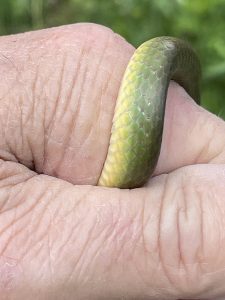
My holy grail of Long Island snakes long has been the smooth green snake. This beautiful tropical looking species, lime green with yellow tinges on the lower sides with white on the bottom, is a snake I’ve wanted to see on Long Island for at least 50 years and finally on May 20, 2025 I found one, tipped off to the spot by another individual interested in snakes! I celebrated with a tasty beer that night. Green snakes were once relatively common on Long Island but has become increasingly rare due to the dual impacts of habitat destruction and pet collecting and is now reported from just a few locations on the island.
Black Racers live up to their name, being able to move at remarkable rates of speed when pressed, an activity which I’ve seen twice with glossy black serpents looking supercharged heading off through a thicket of blueberry thickets. They also are able climbers and I once watched a Black Racer climb a multi-flora rose bush in a field in Yaphank in just a few seconds, avoiding thorns as it went, honing in on a bird’s nest to look for eggs or hatchlings — it was out of luck as the nest turned out to be empty, one that was probably used the year before.
The Eastern hognose snake is another species that has become increasingly rare here. So named because of its upturned snout like a hog, this species is an eater of toads and a dweller of sandy habitats, and often displays a behavior when disturbed that’s right out of a Disney movie.
When agitated the snake at first may lunge at the object causing the disturbance; this is a bluff as the mouth stays closed. Then often but not always the hognose begins to writhe spasmodically going into its “death throes,” turning belly up and flaying its tongue out of its mouth. Sometimes there’s blood in the corner of its mouth because of capillaries in its mouth lining it can break to spill blood, adding a convincing element to its “death.” But give this “dead” snake a couple of minutes of playing ‘possum and if the coast is clear it will move away.
I’ve seen this behavior twice — once while co-leading a hike in the Manorville Hills of the Long Island Pine Barrens where we encountered a hognose on the edge of the trail that quickly “died” and the second time while exploring the Albany Pine Bush. I had turned over a large board to find not one but two hognose snakes beneath.
Displaying opposite behaviors, one quickly shot away while the other remained in place and began its death feign act. I moved a few steps away and watched for several minutes as the snake became active again, darting its tongue out repeatedly to gain sensory information to determine if the “coast was clear.” (This is how snakes “smell” — by pulling in scent molecules and processing them in their Jacobsen’s organ located in their nasal chamber).
Northern water snakes live up to their name, frequenting wetland areas throughout the central and eastern parts of Suffolk County. The species is an attractive mix of tan, brown, and black, sometimes with patches of grey. They are fond of fish and frogs and can sometimes be seen swimming along the edges of a pond or stream in search of prey. The last one I saw was on the edge of a wetland on the south side of the east-west trail that crosses over Quantuck Creek at the Quogue Wildlife Refuge.
The Brown, Redbelly and Eastern worm snakes are all small species rarely seen since they spend much of their time underground; the Redbelly is very rare on Long Island and the one native species I have not seen. I remember a field in East Meadow that had an abundance of Brown snakes; it became developed to provide housing for students at Hofstra University.
The closely related common garter snake and Eastern ribbon snake are quite similar in appearance and can be easily confused. While not absolute, they typically segregate by habitat with the garter found in dry uplands and the ribbon using wetter areas. Also, ribbon snakes are the thinner of the two, possess a longer tail, and have a diagnostic little white dot in front of their eye that the garter lacks.
Garter snakes are sometimes mistakenly called “garden snakes,” based on a mishearing of their name. The name garter comes from the longitudinal stripes once found on women’s garter belts, said long stripes being a conspicuous feature on this species. They are the most common snake species on Long Island.
Many people don’t like snakes and some even fear them, perhaps since a few are venomous, although with the demise of the timber rattlesnake no venomous snakes remain on Long Island. Objectively, there is nothing to fear of snakes and in reality they are unique and fascinating life forms with interesting behaviors and strategies they employ in order to survive. And quite frankly they have much more reason to fear us than us to fear them given the sad, knee jerk reaction by some to kill any snake they see. For readers who like and appreciate snakes enough to have read to the end of this article, I hope you see one of our native species soon perhaps by also becoming a flipper of boards!
A resident of Setauket, author John L. Turner is a naturalist, conservation co-chair of the Four Harbors Audubon Society, and Conservation Policy Advocate for the Seatuck Environmental Association.
Alternative bait could help protect horseshoe crabs
By Emily Mandracchia
In response to the alarming overharvesting and endangerment of horseshoe crabs on Long Island, conservationist John Turner of Seatuck is launching a groundbreaking fall project to create a lab-based, sustainable bait alternative — one he hopes will protect both marine life and local fishing livelihoods.
Horseshoe crabs are commonly used as bait for whelk, a carnivorous snail, and eel fishing; there are minimal measures currently in place to prevent over-harvesting. Long Island’s shore birds and migratory birds rely on horseshoe crab eggs for protein. Inhabiting as far north and south as Nova Scotia and Mexico, Horseshoe crab eggs are an essential food source for migrating shorebirds, fish and benthic (bottom-dwelling) species. Further, they are food sources for loggerhead sea turtles. Even sparrows feast upon their protein-rich eggs.
Turner said these “very significant crabs” linger on the sound’s floor, thereby increasing turbidity and stirring up a variety of food sources for other species.
The consequences of horseshoe crab endangerment is not limited to our island’s coastal populations; they are most valuable to humans for their blood proteins which are extremely sensitive to bacteria, making them an effective reagent.
The extracted compound, known as Limulus Amebocyte Lysate (LAL), acts as an indicator on screen-injected drugs and implanted biomedical devices for detecting gram-negative bacteria — Turner cites as a huge reason to thank these spider-legged creatures. Unfortunately, according to The Atlantic States Marine Fisheries Commission, the mortality rate of these crabs, once released back into the wild, can surpass 30%.
In terms of policy, Turner states that extremely small-scale measures may be decided by local jurisdiction. In the past, harvesting quotas have been instituted, reaching 150,000 crabs per year per location, as specified by the Department of Environmental Conservation.
But Turner says this is no solution, nor is it sustainable. 150,000 is a great number when considering how horseshoe crabs were exponentially more abundant in the past, especially because just one bird may rely upon hundreds out of a 4,000-egg nest to migrate — causing a ripple effect across the food chain. Humans are not exempt from the effects of wildlife endangerment.
Alongside the DEC, the Cornell Cooperative Extension and Stony Brook University, Turner’s project expected to launch this fall will craft lab-effective bait, which also must be cost and yield-dependent for fishers who participate in the trial.
Even still, stricter measures are necessary in keeping the horseshoe crab population abundant and thriving. Turner cited possible four five-day bans around new and full moons in May and June where harvesting is illegal so the crabs may spawn and disseminate uninterrupted, or total closings at certain locations. The DEC describes that sampling for taking population estimates would be conducted around these optimal moon phase and tide stage to indicate trends in horseshoe crab population.
Former closures have suggested that it takes between 8-10 years before changes in abundance of spawning-aged crabs are observed as a result of these management changes by the DEC, and an increase in adult horseshoe crab abundance is expected to begin in 2028.
State legislatures are still capable of vetoing these stricter conservation measures, as the DEC’s overall goal is to improve the stock status of horseshoe crabs in the New York region over time while still maintaining use of the species, specifically “ecosystem services, commercial harvest and observation and appreciation.”
Regardless, Turner remains cautiously optimistic as new, more serious regulatory policies for quotas or commercial banning still have a chance to be passed if conservation groups are persistent.
The Pressroom Afterhour: John Turner on letting the river run at Blydenburgh dam
Coming up on The Pressroom Afterhour, John Turner, a senior conservation advocate at Seatuck Environmental Association, joins us to talk about Blydenburgh County Park and the two possibilities it faces. Turner describes a future Blydenburgh where the dam is not rebuilt and a river takes its place.
Next, we turn to federal grant cuts that are threatening the future of vital research projects. We’ll break down how funding changes could affect faculty, postdocs, and students.
Finally, we stop by the Middle Country Public Library, where a recent blood drive drew dozens of local donors. We’ll hear from community members, staff and volunteers about what motivates them to give—and why even small donations can have a life-saving impact.
Nature Matters: Something to crow about — Long Island Corvids
By John L. Turner

Walking out of the returnable bottle vestibule at the local supermarket, I looked up to see a swirl of black forms, circling and swooping over the parking lot. I quickly counted eighteen crows and wondered what they were doing and what species was involved? A dozen landed on the building parapet, sitting in even spaced intervals about three feet apart and began vocalizing — I got the answer to the second question as their deeply nasal caw gave them away — I was watching a flock of Fish Crows, or as a flock of crows is also called “A Murder of Crows,” right here in a suburban parking lot.
Fish Crows, which breed here, are a member of the Corvid family (or Corvidae) which has three other representatives of this fascinating bird family on Long Island — Blue Jay, American Crow and the Common Raven, a relative newcomer to the island’s avifauna. (The Raven is also the largest songbird in the world, an interesting factoid you can impress people with at cocktail parties). There are twenty-three corvid species in North America with other representatives of the family including magpies, nutcrackers, and scrub jays.
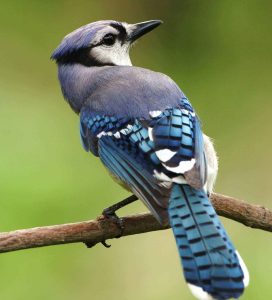
As for the answer to the first question about their collective behavior, each and every bird was doing something important since such rapid communication was taking place between crows. The perched birds called repeatedly, almost incessantly, projecting their head forward to emphasize the call, so much so I thought they might tumble from the building edge! A few more joined the scene flying north from the nearby home improvement store and they proceeded to land on the parking light poles of the supermarket, cawing as they flew in.
I watched for at least ten minutes as they called back and forth and I felt simultaneously amused and frustrated in not being able to enter their world and understand what the fuss was all about. The spring mating season would soon be here with the birds pairing up to raise the next generation of fish crows. Was this the crow equivalent of a farewell party? Whatever the reason, it was a pleasure to watch a group of animals socializing in such an animated way. It brought a smile to my face.
Another supermarket customer came out and once he passed the entrance overhang looked up, presumably drawn by my upward gaze and the raucous calling. He formed his arms as if he were firing a rifle and raised them in the direction of the birds. My smile immediately disappeared as his attitude and intent was clear. I said something to him that I cannot repeat in this family newspaper and his reaction, so immediate and spontaneous as to reveal his true attitude, darkened my mood for much of the day.
In fact, his attitude of hostility toward crows is an all too common one. Based on New York State hunting regulations, promulgated by the Department of Environmental Conservation, you can kill as many crows as you want, each and every day, during a six month hunting season running from September 1st to March 31st. All this despite the fact that virtually no one hunts crows to eat them — they are shot for “sport.” The state agency, created to “conserve the environment,” one that you support with hard earned tax dollars, is in support of suffering and a wanton waste of life.
While some have a negative view of crows, a more positive view is developing, fostered by a recognition they are remarkably smart birds, a fact borne out by experiment and observation.
The results of a recently published trial relating to “geometric regularity” bears this out. In this study, researchers rewarded crows if they correctly identified a shape which is different from a group of other displayed shapes — like four stars and a crescent. If a crow pecked at the crescent it would be given a treat, a delicious mealworm! The crows’ abilities were tested when it came to shapes that were different but in more subtle ways such as a square and another quadrilateral figure with which the angles and lines varied little. The subtlety didn’t matter as the birds pecked the correct symbol and got the mealworm.
We know from ample experiments and observations that crows are one of the few bird groups that use tools. In one famous set of experiments, crows had to know to drop rocks into a tube of water to raise the water level enough to reach a floating treat. They did this well and when confronted with two tubes, one containing water and the other sand, knew not to bother with the sand filled tube.
In another experiment crows knew to insert one tube into another to gain enough length to reach food. The use of compound tools, as displayed by crows, has only been seen in Great Apes.
To round out the intelligent capabilities of crows, they are known to recognize and distinguish human faces, being able to remember them for many years. What’s the reason for such intellectual prowess? Well, part of it has to do with the fact that corvids have large brains in comparison to their bodies. But the main reason has to do with the high density of neurons corvid brains possess and the overall complicated structure of the corvid brain.
This time of year crows and other corvids have paired up to breed and raise a new generation. They will stay paired for the next couple of months but as summer wanes and the cooler weather arrives you’ll notice a change in their behavior. The pair bonds dissolve and the crows, ever gregarious and social, will spend the winter in flocks which can number in the hundreds, during which time individual crows observe the behavior of other crows learning: What do they eat? In what direction and how far do they fly from their overnight winter roost to find feed? How do they detect and avoid predators? This social aspect of crows also helps to explain their overall adaptability and intelligence, traits that if my fellow shopper knew, might result in him replacing his knee jerk aggressive gesture with a sense of admiration.
A resident of Setauket, author John L. Turner is a naturalist, conservation co-chair of the Four Harbors Audubon Society, and Conservation Policy Advocate for the Seatuck Environmental Association.
Living Lightly: Helping migratory birds
A Column Promoting a More Earth-Friendly Lifestyle
By John L. Turner

Over the past several weeks and continuing now in a diminished fashion, hundreds of millions of birds have been migrating north to their breeding grounds to raise the next generation. Colorful songbirds like warblers, tanagers, thrushes, grosbeaks, vireos, and many other groups are winging their way through the night to reach their desired destinations, using, remarkably, the celestial constellations and the Earth’s magnetic fields to orient themselves and stay on course until they arrive at their breeding grounds.
On their travels these birds face a gauntlet of challenges so the question is: would you like to take a simple step to help ensure they successfully complete their remarkable journeys? Shut off unneeded interior lights or pull down blinds to prevent the light from bleeding outward. Also, and more importantly, turn off exterior lights. A number of studies have documented that lighting confuses and disorients birds just as it does to moths, drawing them into unfriendly environments like developed areas where feral and free roaming pet cats and glass windows are abundant. By reducing the amount of ambient light we can help migrating birds safely reach their nesting sites. Plus, you’ll save a little in energy costs.
A resident of Setauket, author John L. Turner is a naturalist, conservation co-chair of the Four Harbors Audubon Society, and Conservation Policy Advocate for the Seatuck Environmental Association.
Nature Matters: A cloak in the morning
By John L. Turner

Strolling up a slight incline on a trail pockmarked with pebbles the oak forest fell steeply away to my right. The warm spring air on this day in late April was most pleasant and welcome and I paused for a moment to bask in the warmth of a circle of sunlight reaching the ground through a small break in the tree canopy, happy winter was in the rear view mirror.
Numerous Flowering Dogwood trees were in blossom in the forest, adding a splash of white and pink to the understory, their flowers reminding me of a grouping of water lilies floating fifteen feet in the air, although they were at eye level because of the falling slope.
And suddenly movement — a butterfly is sailing toward me down the trail, turns in a half circle and lands in a foot square patch of sunlight with wings open, facing away so that its dark wings have the best angle to absorb the warmth the shaft of sunlight offered. A mourning cloak, a butterfly with a three inch wingspan, has joined my morning, an identification I make easily and instantly due to its highly distinctive coloration, which is unlike any other butterfly in eastern North America.
The mourning cloak, so named because its dark brown body with a pale yellow band along the outer wing margin is reminiscent of the attire once worn during funerals and other somber occasions, is a stunningly beautiful insect.
The derivation of the scientific name is a different story; Nymphalis antiopa relates to arcane Greek mythology. The brown of the body and wings is rich walnut in color and toward the wing edge numerous purplish-blue oval dots are patterned within a narrow band of black, this band adjacent to the aforementioned yellow band at the wing margin. Dark flecking is sprinkled throughout the yellow. Four small yellow wedges are positioned along the leading edge of the wings. Two prominent dark colored antennae project from the butterfly’s head, forming a classic letter vee.
The underside of the wings are as drab as the upper wings are showy. This adaptation helps the mourning cloak blend in on tree bark or leaf litter if it falls to the ground and plays dead, as it sometimes does to avoid predation. If it decides instead to flee it can erupt fast, emitting an unusual clicking sound (which I’ve never heard) which reportedly disturbs birds.
The mourning cloak is typically the first butterfly to emerge in the spring because it overwinters as an adult; no need for springtime pupation and metamorphosis as with other butterflies. Adults spend the winter in surprising fashion — hibernating beneath flaking tree bark, in tree cavities and in the cracks of larger rocks. They are able to survive the winter because they have “antifreeze” in their blood and cells — sugar compounds (glycerols) which lower the temperature at which the insect would freeze. Once it emerges it rapidly shivers its flight muscles helping the butterfly to warm up. Its dense hairlike bristles help to hold the muscle-generated heat inside.
Another surprise in a butterfly with several surprises is that, once it emerges, it doesn’t depend upon, or much utilize flowers and their sugary nectar, although the species will occasionally visit them. Rather, they depend upon tree sap, the moisture and sugar in fallen fruits, the sweet exudate of aphids, mud puddles, even animal dung. Due to the fact this butterfly came out of pupation last summer means it is — as far as insects go — a long lived insect, having a lifespan as much as ten to twelve months.
Not surprising, given its ability to survive frigid temperatures, the mourning cloak is found in temperate and cold regions all across North America, Europe and Asia. In England it’s known as the ‘Camberwell Beauty’; the species was first discovered in England at Camberwell in 1748 and the discoverer, Moses Harris, suggested the name. It also ranges south and is known from Central and South America.
If the mourning cloak mates, egg laying takes place with the eggs laid on one of a wide range of host plants including various willows, aspen, birch, hackberry, elm, hawthorn, cottonwood, poplar and mulberry, among others. The eggs are laid in long clusters along the stem near its tip and they are as beautiful as they are geometrically distinctive; they remind me a little of the dome of the U.S. Capitol. I wouldn’t blame you if you stopped reading here and “Google image” the eggs. It’s worth the effort.
At first, when small, the caterpillars stay together but after going through growth stages known as instars they separate. A mature caterpillar is black with eight orange dots and is heavily spined which, if touched, can irritate the skin. The pupa, the case in which the miracle of metamorphosis occurs, is also spined. On Long Island the butterflies emerge in early to mid-summer and will, if the weather grows hot, aestivate (kind of like hibernation in the summer). Another emergence can occur in the fall.
As with so many elements of the natural world, butterflies unfortunately are declining in abundance and mourning cloaks are no exception. In a recently published study measuring population trends of North American butterfly species, the mourning cloak has declined by about 22% over the past quarter century. This alarming decline appears due to a combination of continued widespread pesticide use, climate change, and habitat loss.
How can you help this iconic harbinger of spring? By foregoing the use of pesticides, leaving on your property standing dead and dying trees with their sheltered protective cavities and sloughing bark, and supporting organizations devoted to butterfly conservation such as the Xerces Society.
A resident of Setauket, author John L. Turner is a naturalist, conservation co-chair of the Four Harbors Audubon Society, and Conservation Policy Advocate for the Seatuck Environmental Association.
Living Lightly: Clothing and the planet
A Column Promoting a More Earth-Friendly Lifestyle
By John L. Turner

I did a double take while reading the following sentence — “It is estimated that each year over one billion pounds of clothes and textiles are disposed of in landfills in New York State,” a fact according to the NYS Department of Environmental Conservation. That’s a billion with a B!
Another fact: Each and every American throws away about 68 pounds of clothing each year. And the environmental impacts don’t end there: once in landfill, textile manufacture waste takes 80 to 1000 years to break down, generating about 1.2 billion tons of CO2 annually, polluting waterways and soil systems, and contributing to the growing climate change problem.
There are ways to lessen these impacts from clothing. An obvious idea is to bring your lightly used but no longer wanted clothes to one of the local thrift stores or give them away to members of the community by posting them on sites like Stony Brook Freecycle for pickup. Similarly, you can donate unwanted clothing by depositing them at drop-off bins. Some local charities like the Salvation Army, Big Brother Big Sister, and Goodwill also accept clothing items. Also recyclable are no longer wanted linens like sheets, bedspreads, and pillow cases.
When it comes to denim, the website bluejeansgogreen.org provides information on how you can recycle no longer wanted denim jeans by bringing them to a local retailer or through the mail.
Another great option is to participate in the Town of Brookhaven’s “Dress for Success” program. Lightly worn, nearly-new professional attire can be donated, thereby helping women gain a professional wardrobe, a requirement in some professions. The Dress for Success office number is 631-451-9127.
A resident of Setauket, author John L. Turner is conservation chair of the Four Harbors Audubon Society, author of “Exploring the Other Island: A Seasonal Nature Guide to Long Island” and president of Alula Birding & Natural History Tours.
Nature Matters: Wicked little puddles – Long Island’s vernal pools
By John L. Turner

They are quite easy to overlook. Most are small, some really small, the size of your living room. Or maybe no bigger than the size of the first floor of your house. They are typically dry by the time summer’s heat reaches full blast so if you’re not trained to look at a shallow depression of water stained leaves you may not know what you’re looking at — a dynamic ecosystem that when filled with water sustains scores of species.
These habitats, just dimples in the landscape, are known as vernal pools, or as a key researcher from the Massachusetts-based Vernal Pool Association likes to call them, “wicked little puddles.” They are fascinating small-scale ecosystems filled with wonder and discovery.
Vernal pools gain their name because generally they have their highest water levels in the spring, around the vernal equinox, due to the combination of seasonal rains and snow melt. Amphibians are the stars of the vernal pool show, taking advantage of these fishless environments allowing them to breed successfully. Three of the more common Long Island amphibians utilizing these pools are Wood Frogs, Spring Peepers, and Spotted Salamanders.
Beginning in the middle of March, unless it’s a harsh winter, these species emerge from their upland overwintering sites (under logs, in rodent holes, etc.) and migrate to the ponds to make the next generation. Visiting a pool on a spring night it is not unusual to hear the deafening peeps of the Peepers (living up to their name) and the vocalizations of wood frogs (a cross between the quack of a duck and the barking of a dog).
Shine a flashlight on the water and you might see the tail swish of a beautiful yellow-dotted Spotted Salamander moving through the leaves lining the pond’s bottom. Or perhaps it will be cork-like creatures in the form of mating pairs of wood frogs in amplexus — she releases dozens to more than a hundred eggs into the water quickly followed by the clasping male releasing a cloud of sperm. Soon, the gelatinous egg mass swells with water, forming fist size clusters, anchored to submerged stems and over the next couple of weeks the embryos develop, eventually hatching into tadpoles.
Spotted Salamander egg masses look similar but in their case fertilization is internal with the female taking up sperm capsules (called spermatophores) which the male salamanders have deposited on the pool bottom. Spring peepers, a species of treefrog, don’t lay egg clusters like these other two species but rather deposit individual eggs.
Other amphibians known to use Long Island vernal pools include cousins to the Spotted Salamander: Marbled, Blue-spotted and Eastern Tiger Salamanders (a New York State endangered species), Red-spotted Newts, Fowler’s and Eastern Spadefoot Toads, Grey Treefrogs, and to a lesser extent American Bullfrogs, and Pickerel and Green Frogs.
Many other forms of life thrive in these “wicked little puddles.” One fascinating species are fairy shrimp, small krill-like crustaceans that swim about the water column “upside down” with females carrying egg clusters in their tail appendage. We have two species on Long Island, both of which are quite adept at surviving prolonged dry periods even when vernal pools remain dry for several consecutive years, such as during a drought.
How does a fairy shrimp survive prolonged dry periods? Their eggs are cyst like and can tolerate complete desiccation, extreme cold, harsh UV exposure, and other extreme environmental conditions and come out of it no worse for the wear — they are the definition of tough! The eggs are even known to travel through the digestive system of ducks (several species of waterfowl routinely feed on fairy shrimp), unscathed by the bird’s digestive acids and it is thought this pathway explains how shrimp colonize new pools.
Many other types of invertebrates frequent vernal pools including quite a few types of water bugs and beetles, midges, mites, and mosquitoes, dragonflies and damselflies, worms, snails and clams, copepods, all tied together with amphibians and other vertebrates in a complex food web of “eat and be eaten”.
For many vernal pool inhabitants, including amphibians, there is a clock always ticking, as animals speed to complete stages of their life cycle before the pools dry up, certain death for tadpoles that have not yet completed metamorphosis. Some eggs hatch as quickly as a couple of days and tadpoles can undergo the miracle of metamorphosis in a few weeks. Some grow more rapidly by dining on the aforementioned fairy shrimp which is a plentiful source of protein in the pool.
For these vernal pool frequenting amphibians to survive, it is not enough to protect just the pool and pool basin. Wood Frogs, Spotted Salamanders and many other amphibians migrate from the pools once breeding is done to spend the rest of the year in adjacent upland habitats around the pools. “Around” is a relative term as it may involve distances of several hundred feet since some individuals travel far (a few individuals such as Tiger Salamanders and Wood Frogs have been documented moving more than a thousand feet from the pool). Thus, protecting upland habitats around vernal pools is vital. Protecting upland areas between pools is ideal!
In 2022 a coalition of environmental groups worked with the NYSDEC and the Governor’s office to amend the NYS Freshwater Wetlands Act, strengthening it in many ways including providing greater protection for vernal pools. This effort paid off as vernal pools are included as one of eleven new categories of “‘wetlands of unusual importance” which provides them protection. Good thing as countless of these tiny to small, but amphibian-essential, pools, which are sometimes dry, have been destroyed, having been filled in and leveled for development.
Through funding from the Long Island Community Foundation (as it was known at the time; now it’s the New York Community Trust), the Seatuck Environmental Association undertook, with many other individuals and organizations through the framework of “Vernal Pool Working Group,” an island-wide effort to locate and characterize all of the vernal pools situated on Long Island.
Now completed, this project has identified about 350 pools from Queens to the west and the Montauk peninsula to the east. A second phase of the project included the publication of a Landowner’s Guide to Vernal Pool Management providing recommendations for public and private property owners to better manage and protect their vernal pools and the species that utilize them.
One recommendation is to leave branches in the pond that have fallen in as they often are used by salamanders and frogs for sites to anchor their egg masses. Another is if your house has a basement with window wells to put covers over the wells to prevent amphibians from falling in. Several years ago I rescued a tiger salamander from a house in Ridge that had fallen into just such a well, where it ultimately would have perished if left alone.
Vernal pools are fascinating places to explore — little microcosms of ecosystems. They are truly “wicked little puddles,” beautiful and fascinating places in which to connect and explore the natural world that surrounds us all. I hope you find time to visit one.
A resident of Setauket, author John L. Turner is a naturalist, conservation co-chair of the Four Harbors Audubon Society, and Conservation Policy Advocate for the Seatuck Environmental Association.
Living Lightly: The life-giving nature of dead trees
A Column Promoting a More Earth-Friendly Lifestyle
By John L. Turner

During their lives trees perform functions critical to the health of forests and its wildlife — providing oxygen to the atmosphere for the benefit of all animals including humans, preventing soil erosion and helping to enrich and aerate the soil, and producing food such as nuts, fruits, and seeds that nourish many species of wildlife.
In death, trees continue to serve vital ecological functions; as the wood softens and the bark peels away from the trunk, the tree creates nesting and roosting habitat as bats and many insects and other invertebrates seek shelter under the bark as does one bird, the brown creeper, which builds it’s crescent shaped nest under large pieces of bark. Woodpeckers have an easier time excavating cavities in the trunk creating nesting habitat for themselves and more than 80 other species of North American birds. These cavities are used by many other wildlife including reptiles, amphibians, and, of course, many mammals like raccoons and flying squirrels. Condominiums in the tree canopy are available to many!
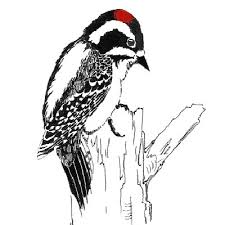 As the wood softens further, breaking down from the elements of weather, fungus, bacteria and insects, the standing tree becomes a cafeteria too. Woodpeckers chip away the softened wood to feast on beetle grubs previously hidden beneath the surface and mammals feed on several types of shelf fungus that sprout from the trunk like the well known chicken-of-the-woods and hen-of-the-woods, two delicious mushrooms that humans like too!
As the wood softens further, breaking down from the elements of weather, fungus, bacteria and insects, the standing tree becomes a cafeteria too. Woodpeckers chip away the softened wood to feast on beetle grubs previously hidden beneath the surface and mammals feed on several types of shelf fungus that sprout from the trunk like the well known chicken-of-the-woods and hen-of-the-woods, two delicious mushrooms that humans like too!
Given all the benefits of dead trees, which collectively help to stabilize local ecosystems, the message is obvious — if you have dead trees on your property located out of harm’s way from structures such as your home, garden sheds, and the like, let the dead tree give life. If you do, you might be lucky enough to see a roosting screech owl or a flying squirrel gliding from one tree to another in the darkness
A resident of Setauket, author John L. Turner is a naturalist, conservation co-chair of the Four Harbors Audubon Society, and Conservation Policy Advocate for the Seatuck Environmental Association.


